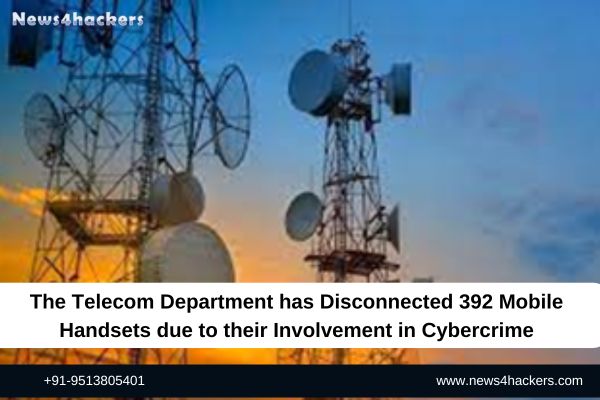The Telecom Department has Disconnected 392 Mobile Handsets due to their Involvement in Cybercrime

The Telecom Department has Disconnected 392 Mobile Handsets due to their Involvement in Cybercrime
In response to allegations of electricity know-your-customer (KYC) verification update scams, the Department of Telecommunications (DoT) has ordered the blocking of 392 mobile handsets and the re-verification of 31,740 mobile connections associated with these handsets.
Further, the authority stated that individuals have been reporting receiving messages from fraudsters using SMS and WhatsApp messages related to electrical KYC updates. These messages are accompanied by malicious APK (android package kit) files that are designed to obtain control over the victim’s device.

KYC update schemes were reported on the “Chakshu” feature of the Sanchar Sarthi portal, which was implemented by the Ministry of Communications in March of this year. This service enables individuals to report spam calls and communications they receive directly on the portal. Following this, the associated numbers are subject to re-verification based on user reports of spam calls and messages. If they fail to pass this procedure, they are disconnected.
The Department of Transportation’s ongoing efforts to combat spam and fraudulent messages include:
The Department of Transportation (DoT) has issued numerous press releases in recent months that have announced the actions that have been taken in response to the requests submitted through the Chakshu portal.

In May of this year, it also prevented the use of more than 1,000 Skype IDs by fraudsters who were impersonating government officials or law enforcement agencies. Additionally, the Department of Transportation (DoT) prohibited eight commercial entities from transmitting more than 10,000 fraudulent messages during the preceding three months (February, March, and April).
How do fraud networks operate in India?
AnandVenkatnarayan, co-founder of Deepstrat, provided an explanation of the methodical process by which fraudsters acquire and fabricate identities in order to obtain SIM cards at MediaNama’s user verification event last year.

Additionally, these IDs are employed to establish numerous bank accounts. He stated that the scammer requires only approximately 2-3 identification cards annually to obtain SIM cards and establish bank accounts for the purpose of conducting their activities. The number of times SIM cards are utilized is limited when they are generated using fraudulent identification. “In order to defraud one hundred victims, they require ten SIM cards,” Venkatanarayan described.
He provided an example of a scam that was being conducted by two individuals in Delhi who were using verified IDs to purchase SIM cards and establish bank accounts. The fraudsters had even succeeded in deceiving the DSC verification process of numerous service providers by conducting e-KYC in accordance with the established standards.

The efficacy of KYC verification in India is called into question by Venkatanarayan’s explanation and the DoT’s recent blocking orders for mobiles and re-verification of associated SIM cards. Given the apparent ease of obtaining forged IDs and subsequently using them to obtain SIM cards and bank accounts, it is reasonable to query whether blocking orders actually address the broader scam issue. The bad actors could simply continue their activities by using more fraudulent IDs, even after certain devices/SIM cards are re-verified.
About The Author:
Yogesh Naager is a content marketer who specializes in the cybersecurity and B2B space. Besides writing for the News4Hackers blog, he’s also written for brands including CollegeDunia, Utsav Fashion, and NASSCOM. Naager entered the field of content in an unusual way. He began his career as an insurance sales executive, where he developed an interest in simplifying difficult concepts. He also combines this interest with a love of narrative, which makes him a good writer in the cybersecurity field. In the bottom line, he frequently writes for Craw Security.
READ MORE ARTICLE HERE





